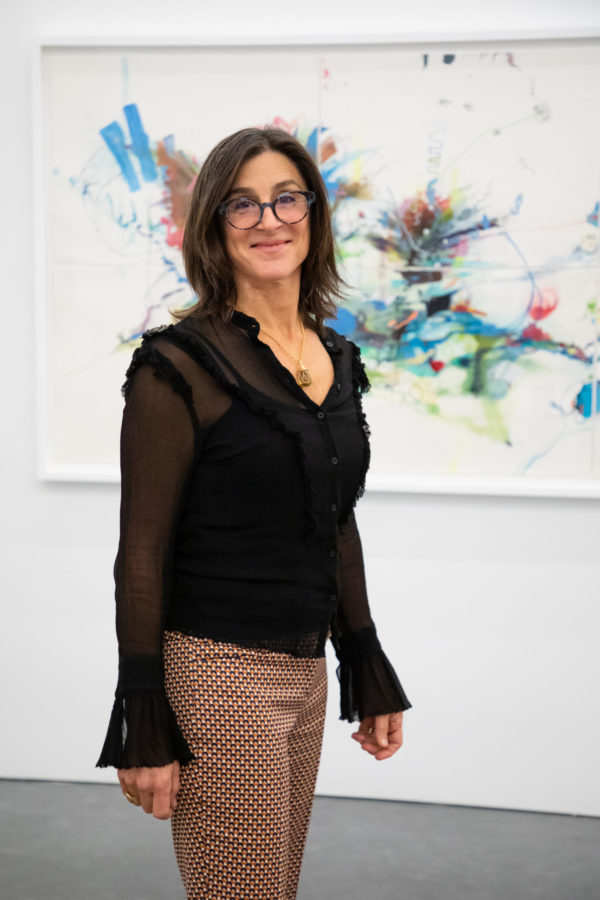
On Friday, January 10, at 6 p.m., the Parrish Art Museum will present the third of five talks by artists whose work is on view in “Artists Choose Artists,” the museum’s juried exhibition that celebrates the artists of the East End and the dynamic relationships that unite the area’s creative community.
Juror Lillian Ball and her two chosen artists, Scott Bluedorn and Janet Culbertson, along with artist Irina Alimanestianu (selected by Alexis Rockman) will gather to address ecological issues in their work from different vantage points. They will be joined by ecologist Carl Safina and together, will discuss how art can draw attention to pressing issues such as climate change and environmental degradation.
“It's exciting to see how this group of artists is concerned with nature and its preservation and I'm delighted to invite ecologist Carl Safina to join the conversation and add his perspective of how art can call attention to these issues,” said Corinne Erni, senior curator of ArtsReach and special projects at the Parrish who organized the exhibition.
An ecological artist and pro-activist who works with wetland issues from interdisciplinary backgrounds in anthropology, ethnographic film, and sculpture, Lillian Ball believes that innovative artwork with stakeholders on conservation initiatives benefits wildlife, communities, and visitors. Her WATERWASH public projects along the Bronx River and Mattituck Inlet combine native habitat restoration, stormwater remediation, and preservation. Her documentary film “Sanctuary” depicts the efforts of one Buddhist monk to preserve native flora and fauna in Buddha’s birthplace, Lumbini, Nepal, where the Sarus cranes nest.
Irina Alimanestianu’s paintings have been shown in numerous exhibitions in Los Angeles and New York, and her writings on art and artists have appeared in Art Issues and other publications. Her mixed media, large-scale painting “Deep Sea Vent” (2017), which is on view at the Parrish, combines oil, ink, pencil, glitter, and watercolor on oil paper in an explosion of organic shapes and dynamic color. Akin to the way natural elements or instances in life seek equilibrium after disruption, the artist introduces chaos before returning to harmony.
Scott Bluedorn addresses climate change by integrating cultural anthropology, primitivism, and nautical tradition into his imagery that speaks to the collective unconscious, particularly through myth and visual storytelling, in a world he refers to as “maritime cosmology.” His new large-scale drawing “Genesis Flux” is a surreal vision of climactic upheaval, including change, renewal, and flux in the unnatural Anthropocene era and sixth mass extinction. The drawing “Integrated Ocean Energy Farm” is the artist’s proposition to repurpose existing structures like oil drilling platforms into floating multipurpose ‘farms’ for growing kelp (for food, biofuels, and regenerative ecosystem services), while combining value-added energy production including solar, wind, and wave power.
Through her extensive travels to experience the planet, eco-feminist and activist Janet Culbertson has painted the dark volcanic islands of the Galapagos, the vanishing animals of Africa, and the degradation of the earth’s once wild places. “Galapagos Tortoise” (1975),a portrait on view in “Artists Choose Artists,” is majestic even as the creature seems to fade and decompose. Her work “Abyss” (1976–2003) is an unapologetic representation of a dystopic exploitation of nature.
Carl Safina is the first Endowed Professor for Nature and Humanity at Stony Brook University (where he formerly co-chaired the Alan Alda Center for Communicating Science), and he leads the not-for-profit Safina Center. His writing about the living world has won a MacArthur “Genius” Award, Pew, and Guggenheim Fellowships. His seabird studies earned him a Ph.D. in ecology from Rutgers. Safina spent a decade working to ban high-seas drift nets and to overhaul U.S. fishing policy and hosted the PBS series “Saving the Ocean.” He is author of “Song for the Blue Ocean” and his seventh book is “Beyond Words; What Animals Think and Feel.”
The talk is $12 (free for members and students). The Parrish Art Museum is at 279 Montauk Highway, Water Mill. Visit parrishart.org for details.
“Artists Choose Artists,” which encourages fellowship among today’s expanded, multigenerational network of artists and demonstrates the diversity of contemporary creative practice, is on view through February 23. Upcoming talks include Margaret Garrett, Ronald Reed and Mark Willliam Wilson on January 24, and Mary Boochever, Anne Seelbach and Dan Welden on February 21.